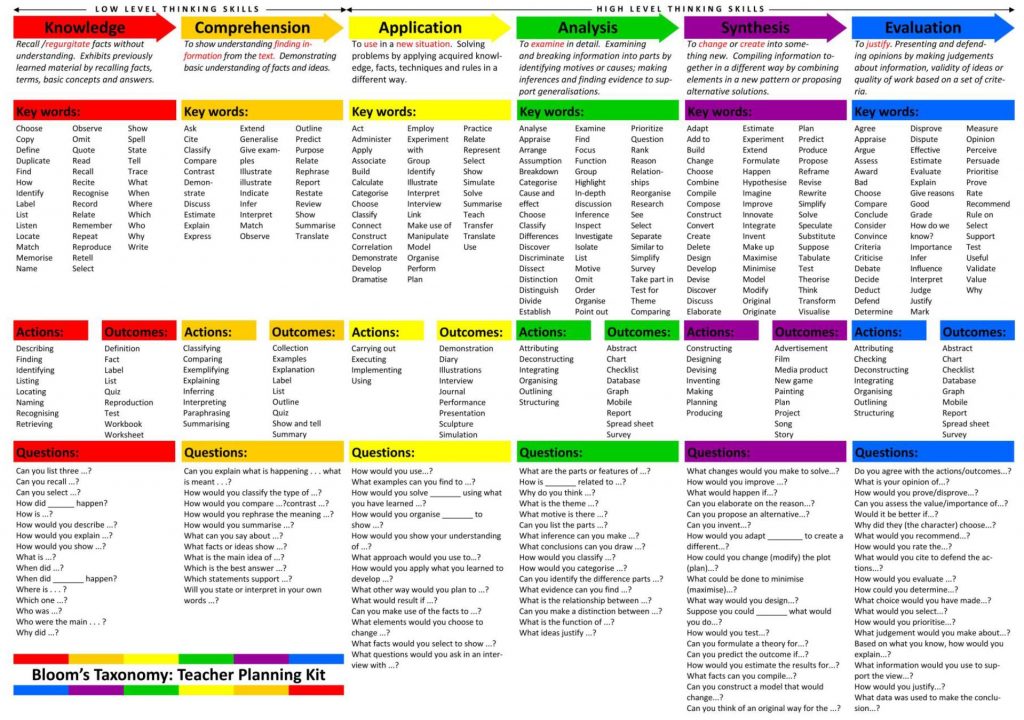On this page you’ll find information on:
-
- What is a learning outcome?
- Where do course and program learning outcomes come from?
- What are learning outcomes used for?
- How to write effective learning outcomes
- Who can change learning outcomes and when?
- How to ensure all learning content and activities align with a course/program learning outcomes
- Resources
What is a learning outcome?
Learning outcomes are statements that describe the knowledge and/or skills students should acquire by the end of a particular assignment, class, course, or program, and help students understand why the knowledge and skills will be useful to them. Very often both terms ‘learning outcome’ and ‘learning objective’ are used to describe the knowledge and skills that will be learned.
Learning outcomes focus on the context and potential applications of knowledge and skills, help students connect learning in various contexts, and help guide assessment and evaluation.
Where do course and program learning outcomes come from?
To ensure consistent knowledge and skills are learned by students across Ontario, the Ministry of Colleges and Universities has released standards which contain required learning outcomes for many programs. These outcomes are set at the program-level. For programs with a Ministry standard, there is flexibility in how course-level objectives are written. For programs that do not have a Ministry program standard, the College has full flexibility in how the learning outcomes are written at the program and course-levels.
What are learning outcomes used for?
Primarily, learning outcomes are used to direct which learning content, activities, and assessments are added to a course to facilitate and assess learning, but are used in other areas across the College, not just in teaching and assessment. For example, learning outcomes are listed on the approved course outline for a course. Course outlines can be used by students to get credit recognition and advanced standing if they apply for programs at other post-secondary institutions. Our Educational Pathways department relies on correct learning outcomes and course outlines to assist students to use their Fleming education as credit towards further study.
How to write effective learning outcomes
At both the course and program level, student learning outcomes should be clear, observable and measurable, and reflect what will be included in the course or program requirements (assignments, exams, projects, etc.).
Bloom’s taxonomy is used to classify learning outcomes into levels of complexity. The taxonomy provides verbs that reflect learning knowledge, attitudes, and physical skills. The list of knowledge levels and their associated verbs is frequently used to structure curriculum learning outcomes, assessments and activities.
(Accessible version and source: https://mygrowthmindsethome.files.wordpress.com/2019/03/blooms-taxonomy.pdf)
Writing Learning Outcomes
- Each course needs to include 3-5 course-level outcomes (exceptions apply based on course hours, etc.)
- Each course-level learning outcome starts with the same stem: “Upon successful completion of this course, students will be able to…”
- Each learning outcome needs to include the following 3 parts:
- Verb – the action that demonstrates what the learner has learned (e.g. explain/ create/ jump)
- Terms such as know, understand, learn, appreciate are generally not specific enough to be measurable. Reference Bloom’s Taxonomy to choose a verb that accurately reflects the level of learning.
- Object – the conditions under which they must demonstrate it (e.g. Schrödinger’s cat/ role-playing game/ out of a plane)
- Criteria – the standard to which the action must be performed (e.g. to a dog/ for toddlers/ that is on the ground)
- Verb – the action that demonstrates what the learner has learned (e.g. explain/ create/ jump)
- Tips: Use student-focused language in course-level learning outcomes.
Examples of Learning Outcomes
Upon successful completion of this course, students will be able to…
-
-
- build probability models to quantify risks of an insurance system and use data to make statistical inferences. (Actuarial Science)
- use basic vector, raster, 3D design, video and web technologies in the creation of works of art. (Art)
- apply differential calculus to model rates of change in time of physical and biological phenomena. (Math)
- calculate the magnitude and direction of magnetic fields created by moving electric charges. (Physics)
-
Reviewing Learning Outcomes
-
- Use the Learning Outcomes Checklist to double-check your drafted learning outcomes for best practice and quality in their design.
Who can change learning outcomes and when?
Learning outcomes that come from Ministry program standards are reviewed periodically by the Ministry, which may result in changes to learning outcomes. Otherwise, the learning outcomes that the Ministry has listed in a program standard cannot be changed. For College created course-level or program-level learning outcomes, once approved by the Chair, these cannot be changed without following the program review and improvement planning process, which is scheduled regularly by the Academic Quality department. The review schedule can be found here and you will be guided by your Chair and Coordinator as to when review activity begins for your program.
How to ensure all learning content and activities align with a course/program learning outcomes
Assessments should indicate how well students have learned, while instruction delivers the learning. For this to occur, assessments, learning outcomes, and instructional strategies need to reinforce each other. To ensure the assessments and strategies in your course support the learning outcomes, ask yourself the following questions:
More information on how to build assessments and curriculum which support learning outcomes can be found on their respective pages.
